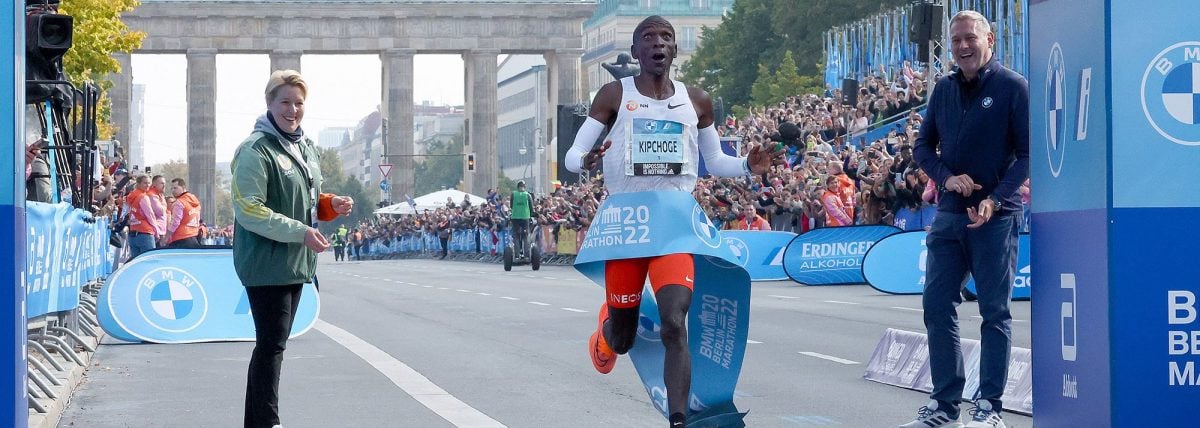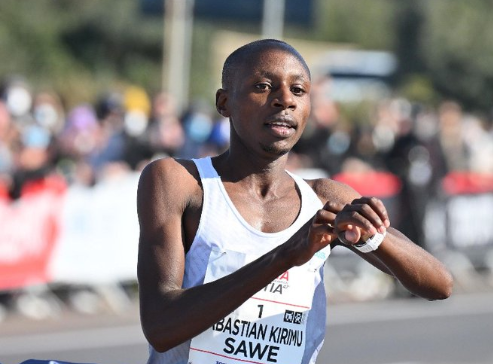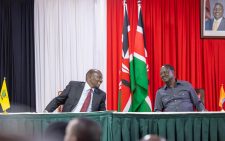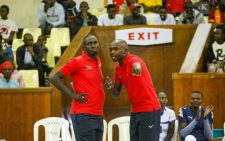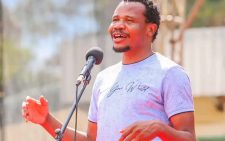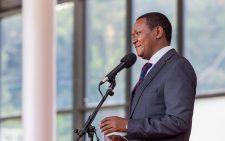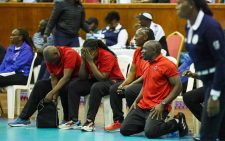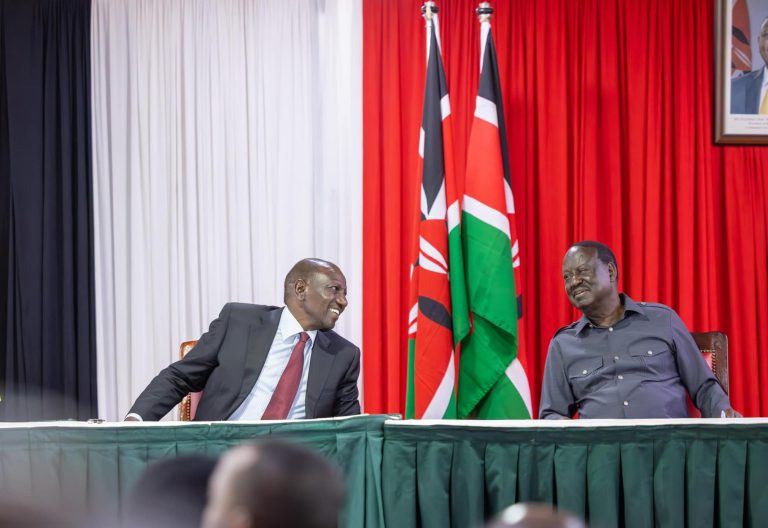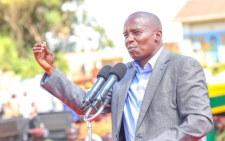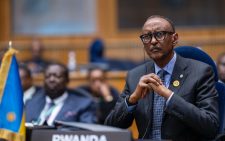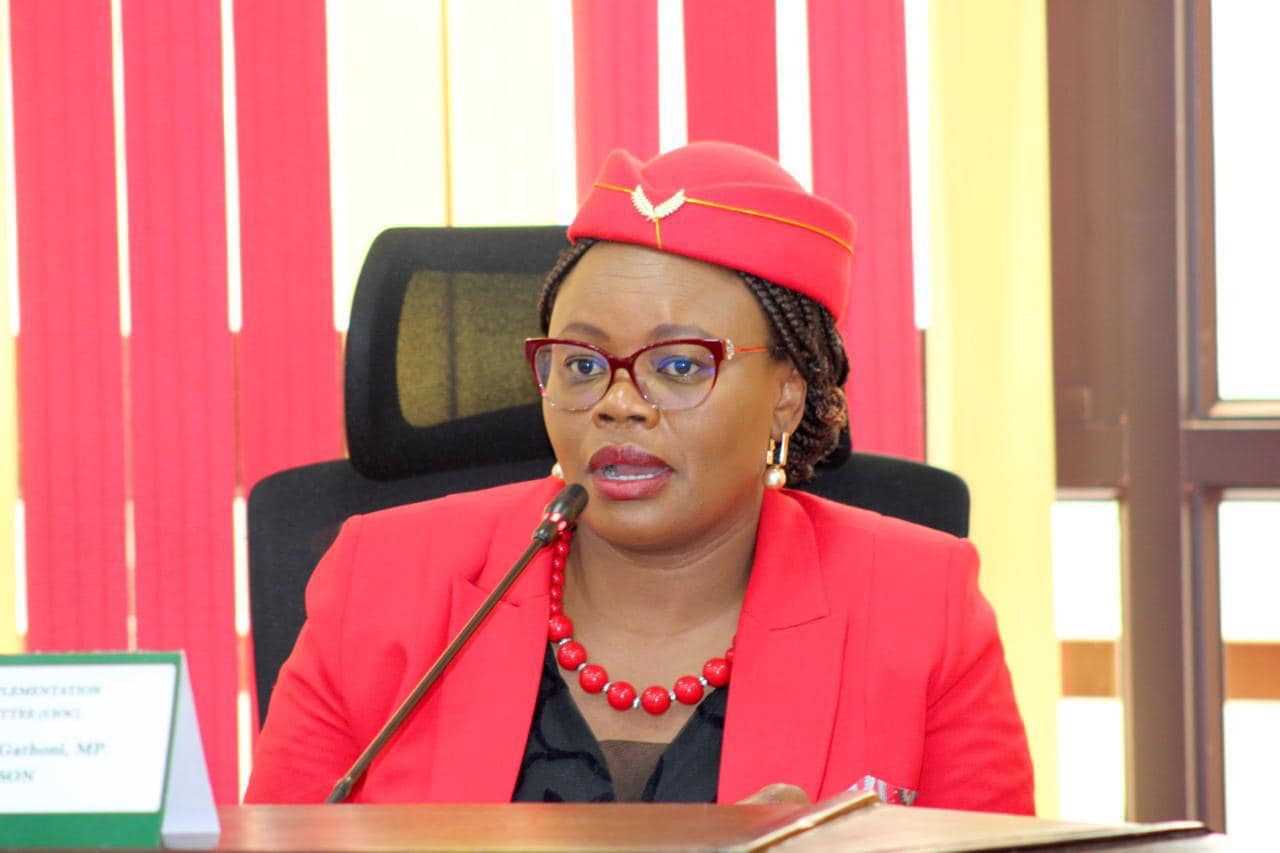Eliud Kipchoge as you have never seen him before
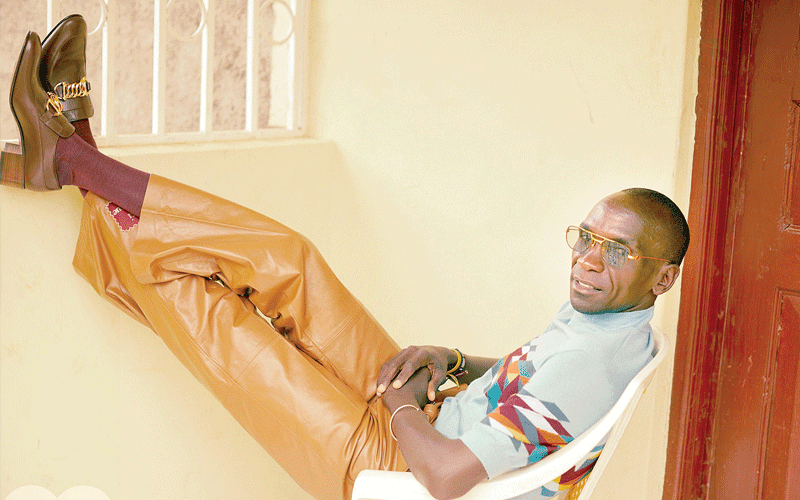
Kenya’s world marathon great stuns in Sh500,000 suit as he describes what it takes to run 26 miles in record time, his love for humanity, family and farming
Knox Robinson for GQ Magazine
In the hills of the Kenyan highlands, among the world’s most spectacular marathon runners, morning comes early, with the 5am ring of a bicycle bell.
It’s December and Eliud Kipchoge is stirring in the predawn gloom, already thinking about the workout—one of his first hard runs since he made history in October, finishing a marathon course in Vienna in under two hours. That achievement—thought for decades to be impossible—instantly made Kipchoge famous around the world.
But it did little to alter the rhythms of his ascetic life at the rural training camp where he lives six days a week, sequestered from even his own family.
Here the walls of his room are virtually bare, except for a picture of Paulo Coelho pinned above his bed and a quote from the Brazilian novelist: “If you want to be successful, you must respect one rule: Never lie to yourself.”
Kipchoge slips on his black half tights, his blue half-zip top, his Nike trainers. And then he’s outside, greeting a dozen or so teammates in the blue darkness before sunrise.
I’ve been invited to join the workout, something of a rarity for a journalist—and a daunting prospect for a 45-year-old amateur.
Prayer first
The elevation is no small challenge. The camp is perched at nearly 8,000 feet, overlooking the Great Rift Valley, in a swath of East Africa regarded as the greatest hotbed of distance runners in the world.
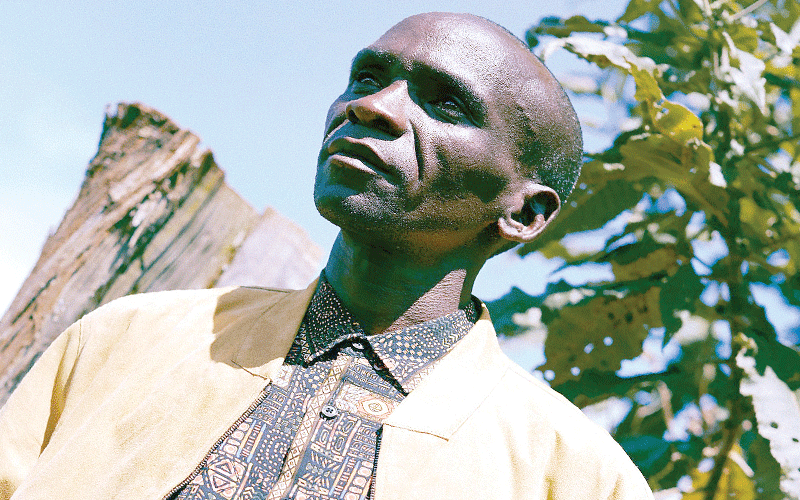
-Herno jacket Sh112,000
-Gues shirt Sh6,900, belt Sh49,500
-Pants by Wales Bonner Sh79,500
Along with Kipchoge, our ranks include Geoffrey Kirui, who won the 2017 Boston Marathon, and the unrelated Abel Kirui, the 2012 Olympic silver medalist.
Nearly every man in the group has run a marathon in under two hours and 10 minutes—a feat only three American runners managed last year.
I’m hoping I can hang for even a few miles in such lofty company.
We begin slowly, jogging a couple of miles down a rocky red-dirt road, farmland stretching in all directions.
At a nearby juncture, we sync up with dozens of other local runners. As the rising sun brightens the surrounding fields, Kipchoge explains the workout: 11 miles broken into tough 10-minute intervals, with one minute of easy jogging between each. Silence falls over us as we face the impending exertion.
Suddenly someone cries out: “One! Two!. Wait, wait, wait,” interrupts another runner. “We forgot to pray.”
And so, from the middle of the country road, the man leads us in prayer, thanking God for our bodies, for the opportunity to run.
“Okay,” says the first guy, beginning again. “One! Two!. Kenya!” shouts another teammate, and Kipchoge and his crew rocket across the dirt road at a pace that’s hard to fathom sustaining for even one 10-minute segment.
The terrain is brutal—rocks the size of grapefruits protrude from the road—but these guys are cruising at well under 5:00 per mile.
I’m a solid runner: I grind out 70 miles a week, I clocked a 2:33 marathon a few years back, I’ve won some races in my day.
But I’m nowhere close to being able to keep up, even for a mile. After the second turn, they lose me.
I’m still doubled over when I see the pack coming back. As they fly toward me, one runner slices his hand through the air like he’s scything wheat.
“Move! Move! Move!” he shouts. I jump out of the way. It’s the first and last workout I attempt with Kipchoge.
Later, back at camp, after a breakfast of fresh-baked rolls and sweet, milky tea, the mood is light.
Inside the compound of low-slung cinder block buildings, a couple of the runners are getting massages while others nap. The only one who doesn’t seem to be at ease is Kipchoge.
We’re sitting, a small group of us, on plastic chairs outside in the sun, and Kipchoge is fixated on the garden—specifically on a young man hacking away at the hedges with a rusty machete.
After a few minutes, Kipchoge strides over, takes the blade, and demonstrates proper hedge-trimming technique, gently lecturing the young man in Nandi before he returns to his chair.
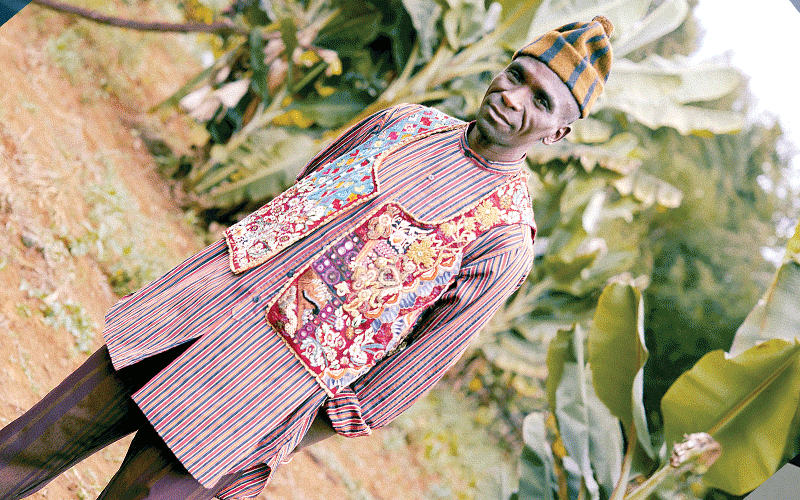
-Coat Sh266,000, jacket Sh8,000
-Shoes & pants by Nike Sh42,500 & Sh8,000
-Sunglasses by Ahlem Sh49,000
“I was showing him how to trim,” he explains. “In the future we want this to be trees all over.” He gestures toward the edge of the property. “So when you’re here, you can relax.”
Other interests
The runners ensconced in the camp—officially and grandly named the Global Sports Communication training camp—each log an average of 130 miles a week. But there’s something more than running going on here.
In addition to being the world’s most elite running enclave, the camp—founded by the Dutch Olympian turned agent Jos Hermens in 1994—serves as a kind of stripped-down wellness retreat, an austere training ground for the mind as well as the body.
You sense it in the zen-like energy of the place, which resembles a high-cardio Tibetan lamasery. And in the rotation of chores in which each of the 25-odd men and women who train here partakes.
Kipchoge might be the greatest runner in history, but he’s still mopping the bathroom, just like everyone else.
Those bonds make the ultimate chore—training—feel a little less arduous. Kipchoge’s regimen is simple: easy running on Monday, Wednesday, and Friday; speed workouts on Tuesday and Saturday; a long run of up to 25 miles on Thursday. On Sunday, rest.
He approaches these sessions with devotion, recording his times for every workout in a notebook.
“If you don’t have faith in your training, then it’s nothing,” he says. He leaves the camp only for brief weekend visits to see his wife and three young children at their home in Eldoret and to tend his farm, where he grows maize and raises cattle.
“That’s one way of relaxing the mind,” he explains. “A farm also helps you be busy, because if you are busy, then life moves on in a smooth way.”
As I chat with him in the garden, Kipchoge radiates tranquility. His face is fuller than I expected; his skin glows brighter.
And yet it must be said: He looks older than his age. His passport says he’s 35, but rumors have swirled that he’s in his early 40s.
Conventional wisdom suggests he has only a handful of marathons left, and he’s aiming to run one of them at the Olympics in Tokyo, which have been postponed from this summer to 2021 in the wake of the surging coronavirus pandemic.
Bekele battle
The lineup of any marathon that far off on the horizon is difficult to predict, but Kipchoge is likely to face another aging superstar—Kenenisa Bekele, the 37-year-old Ethiopian world-record holder in the 5,000 and the 10,000 metres, the owner of the second-fastest marathon time in history (a mere two seconds behind Kipchoge’s official record), and Kipchoge’s sole rival as the greatest male distance runner of all time.
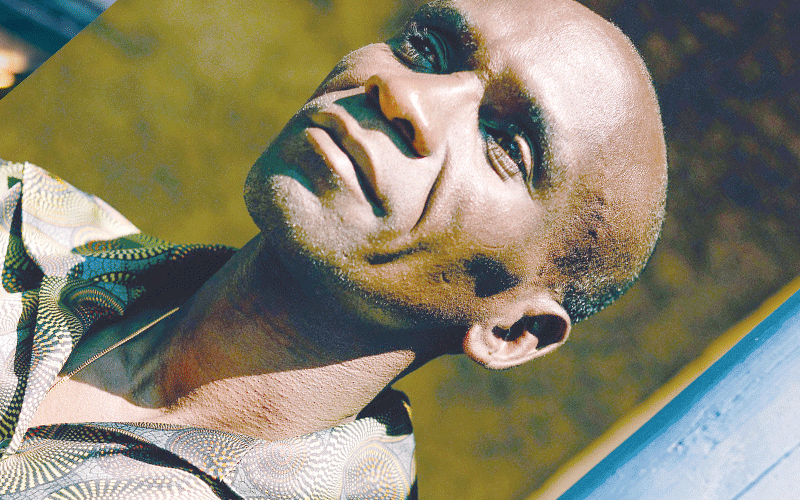
-By Ozwald Boateng Sh112,950
The showdown, if it materialises, would be the marathon equivalent of an Ali-Frazier prizefight, and Kipchoge is preparing for the distant battle with his typical focus.
“When you see marathon people training and you see the results, you don’t know what’s inside those results,” he says.
“Many things are going on behind the scenes. Don’t miss the training in the morning and the evening, because the body is counting.”
For all the simplicity of his isolated life in camp, there’s a duality to Kipchoge’s existence that gets revealed in competition.
That’s when it’s most apparent that he’s aided by tools and technologies afforded only to the planet’s most talented athletes.
Kipchoge is supported by a hyper-sophisticated team of coaches, physiologists, nutritionists, and shoe designers, all working together to optimize every variable that goes into distance running. The whole of this article can be found on www.gq.com
